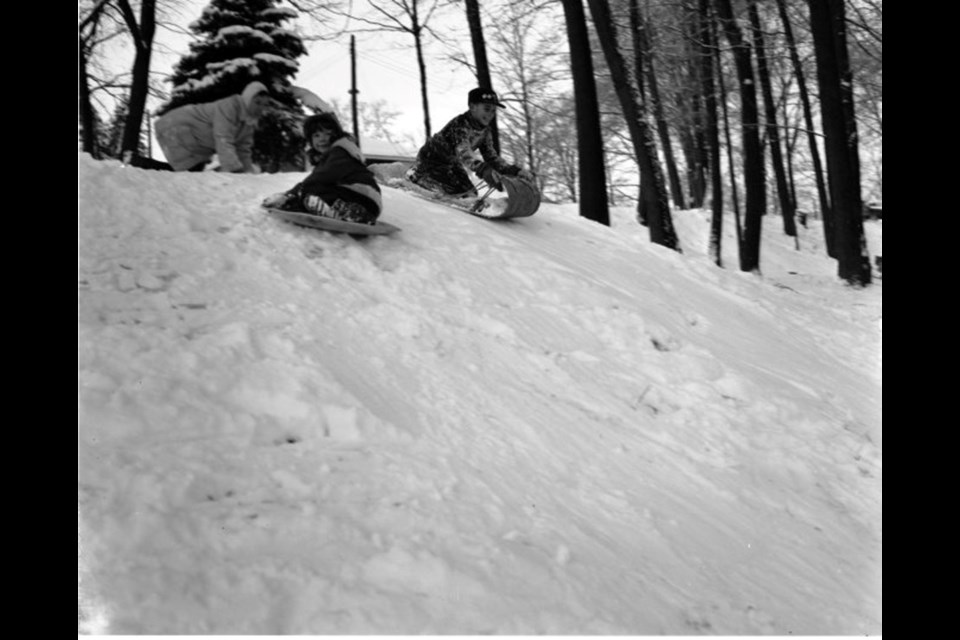If there’s one thing to look forward to in winter it’s the snow. That may not be true for if you have a 100-foot driveway, don’t own a snowblower, or just plain don’t enjoy winter.
For the snow worshippers, Campbell's Hill — the tobogganing hill at Little Lake Park — is packed with revellers. Tobogganers, sledders, or sliders riding on everything from GT racers to crazy carpets, cardboard creations, or the bravest among us that use their own bodies to fly down the hill laughing all the way.
Back in the earlier days of sledding, tobogganers had wooden sleds that could fit a family of four. Whether all four would make it to the bottom of the hill together was half the fun of those rides.
Such were the days when the snow fell light, fluffy and aplenty.
In 1950, an incredible 84 centimetres of snow fell in Midland in December alone, followed by another 73 centimetres in January 1951. That’s 157 centimetres of soft, pillowy landing available.
Fast forward a decade, and Christmas was more than the storybooks could have pictured with a massive 151 centimetres of snow that fell by December. Another 60 centimetres fell by the end of January 1961, meaning that more than 210 centimetres fell in just two months.
While the days of riding on a wooden sled are coming to an end, the actual days available for sledding are fewer than they have ever been before.
For those that prefer going at greater speeds on smaller planks of wood, like birch, poplar, beech, fir, spruce and maple or on one plank made of wood, and fibreglass or polyethylene (plastic), the ski hills at Mount St. Louis Moonstone and the area provide.
These days with less days of snowfall, the hills rely more on artificial snow than ever before.
According to On the Snow, in recent history Mount St. Louis Moonstone’s best year for most days of snowfall was the 2013-14 season with 49 days of snow.
In the last three years, the hill recorded an average of just 16 days of snowfall.
The size of the largest snowfalls has decreased by at least half in the past decade.
With warmer temperatures creating more rain than snow, the winters are just not what they used to be.
Just about 20 years ago, in December 2000, Midland saw an incredible 123 centimetres of snowfall.
By comparison, the total precipitation in December 2022 was just five centimetres.
Considering the amount of rainy days we’ve experienced so far in January — a month with regular temperatures in the minus 20s — it’s not far-fetched to say we should all be seizing the snow days.
